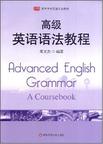高级英语语法教程
出版时间:2008-7 出版社:华东师范大学出版社 作者:邓文杰 页数:353
Tag标签:无
内容概要
本书打破传统语法把“词法”和“句法”分开讲解的形式,从短语切入,围绕句子的扩展和转换逐项论述。它有利于学生完整地把握句法,并从句法引导到段落组织和文章安排,使语法和语言表达有机地结合起来。 本书力求突出创新与实用的特点,既注意吸取传统语法教学的精华,又重视融入转换生成语法和教学语法的新思想,同时注重理论与实践的结合。 本书可供英语专业本科生、研究生使用。
书籍目录
Introduction 0.1 Purpose and approaches 0.2 Hierarchical structure of English grammarChapter One Composition of NP and VP 1.1 Two formulae 1.2 Composition of NP 1.3 Composition of VPChapter Two NP: The Determiner 2.1 Membership 2.2 Collocation 2.3 Simple and compound determinerChapter Three NP: The Article 3.1 Reference 3.2 Idiomatic useChapter Four NP: Number,Case and Gender 4.1 Number 4.2 Case 4.3 GenderChapter Five NP: Modifiers and Pronoun 5.1 Modifiers 5.2 PronounChapter Six VP: The Tense 6.1 Two tenses and no more 6.2 Sense of time 6.3 Tense and timeChapter Seven VP: The Aspect 7.1 Progressive 7.2 Perfective 7.3 Perfective progressiveChapter Eight VP: The Passive Voice 8.1 Form of the passive 8.2 Condition and constraints for the use of the passive 8.3 Expressions active in form but passive in meaningChapter Nine VP: The Mood and The Means of Denoting The Future Time 9.1 The mood and the moods 9.2 Mandative and formulaic 9.3 Means of denoting the future timeChapter Ten VP: Modal Auxiliaries 10.1 Orientation 10.2 Significance of the distinction of the two orientations 10.3 Main modals 10.4 Comparisons 10.5 NegationChapter Eleven NP and VP: The Adjective and The Adverb(1) 11.1 Syntactic functions of the adjective 11.2 Syntactic classification 11.3 Semantic classification: stative vs.dynamic,gradable vs. Non-gradable 11.4 Adverb as phrasal element 11.5 Adverb clausal elementChapter Twelve NP and VP: The Adjective and The Adverb(2),The Preposition 12.1 Adverb“with two forms” 12.2 Degrees of adjective and adverb 12.3 Preposition 12.4 Collocation 12.5 Idiomatic use and ellipsis of the prepositionChapter Thirteen Transformation: Varieties to The Clause Patterns 13.1 Transformation and expansion 13.2 Existential sentence and sentence in which it is involved 13.3 Transformed sentences where it is involvedChapter Fourteen Transformation: Statement,Question,Command and Exclamation 14.1 Statement 14.2 Question 14.3 Command 14.4 ExclamationChapter Fifteen Transformation: Fronting and Postponement 15.1 Fronting 15.2 Inversion 15.3 Postponement 15.4 Fronting and postponementChapter Sixteen Transformation: Substitution and Ellipsis 16.1 Substitution for noun phrases and their constituents 16.2 Substitution for clauses or clause constituents 16.3 EllipsisChapter Seventeen Expansion: From NP to Clause 17.1 NP1 realized by finite and non-finite clauses 17.2 (NP4) realized by finite and non-finite clauses 17.3 (NP2) realized by finite and non-finite clauses 17.4 Finite and non-finite clauses as objects of prepositionsChapter Eighteen Expansion : From(C)to Clause 18.1 Nominal clauses as(Cs) 18.2 Adjectival clauses as(Co)Chapter Nineteen Expansion: From(M)to clause 19.1 Clauses as(M1) 19.2 Finite clauses as(M2) 19.3 Non-finite clauses as (M2)Chapter Twenty Expansion: From [ A ] to Clause(1) 20.1 Semantic classification and descriptionChapter Twenty-one Expansion: From[A] to Clause(2) 21.1 Position in clause 21.2 Dangling clause and its acceptability 21.3 Syntactic classificationChapter Twenty-two Expansion: Coordination and Apposition 22.1 Syndetic and asyndetic coordination 22.2 Syntactic features and semantic implications of coordinators 22.3 Correlatives and some other points about coordination 22.4 AppositionChapter Twenty-three Sentence Analysis: Phrase Structure Rules 23.1 Phrase structure rules(1—3) 23.2 Supplementary features provided by the phrase rules 23.3 Practice of sentence analysisChapter Twenty-four Sentence Analysis: Transformed Sentences 24.1 Transformed sentences 24.2 Practice of sentence analysisChapter Twenty-five Sentence Analysis: Ambiguous Sentences 25.1 Ambiguous sentences 25.2 Practice of sentence analysisKey to ExercisesBibliographyIndex
章节摘录
4. Read the following paragraphs and then classify each sentence in view ofits formation and function. (1) Grammar is the structure system of a language. The grammar of the Englishlanguage is organized into five ranks: the sentence, the clause, the phrase, the wordand the morpheme. Each rank is composed of one or more than one grammatical unitof the immediate lower rank. Thus the sentence is a grammatical unit that consists ofone or more than one clause; the clause, one or more than one phrase; the phrase,one or more than one word; and the word, one or more than one morpheme. Thesentence is the highest rank of grammatical unit while the morpheme is the minimumor the lowest rank. A full sentence can generally be segmented rank by rank down toits smallest constituents —— the morphemes. (3) How can time be measured? Length, volume, mass, energy- almost allthe physical values of the world around us submit to our manipulations. Time is anexception. It is impossible to cut out a segment of time and compare it with anothersegment taken from somewhere else. To measure time, we must select some otherphenomenon which we can manipulate and which recurs in identical fashion. We donot measure time itself, but its manifestation through a physical phenomenon of ourchoice. (4) Hes working himself up to it, maybe. Maybe Augustine is going to do it.He certainly hates him enough. I dont hate him, he thought. No, I dont hate him.He is disgusting but I dont hate him. Though that blinding business puts him in aspecial class. Still this is their war. But he is certainly nothing to have around for thenext two days. I am going to keep away out of it, he thought. I made a fool of myselfwith him once tonight and I am perfectly willing to liquidate him. But I am not goingto fool with him beforehand. And there are not going to be any shooting matches ormonkey business in here with that dynamite around either. Pablo thought of that, ofcourse. "And did you think of it?" he asked himself. No, you did not and neither didAugustine. You deserve whatever happens to you, he thought.
图书封面
图书标签Tags
无
评论、评分、阅读与下载
用户评论 (总计6条)
- 如果你看完了薄冰、张道真或者章振邦的语法书,这本书会让你从一个新的角度来看待语法。不过学这本书之前就具体一点语言学入门知识,读起来可能会轻松一些。毕竟这本书还是有些难度的。
- 这一套研究成果比较新颖有别于其它类型的语法书对读者的水平也是有一定要求的
- 展示图片改换了吧?图片是第一版的诶,可是送到我手里来却是第二版!算了,看在书的质量还不错的份上也就不纠结这个问题了
- 这是一本非常实用的语法书,特别是对于准备英语专业考研的同学,当然是语言学方向的,我读完之后,觉得自己的英语水平有明显提高。
- 这是我们上语法课的教材,老师也说选的不太好,是全英文的,看起来有点难,而且我觉得知识点罗列的不是很有条理
- 这本书写得不错,有一定难度,适合英语专业的高年级学生.
推荐图书
- 教育信息化国际比较研究
- 中国近现代戏剧史
- 中央民族大学2006年鉴
- 实践与思考
- 中央民族大学1951-2001
- 大学英语读写教程学习手册1
- 古傩史料
- 家训
- 21世纪中国教育改革论坛 (平装)
- 基础教育改革学校管理书系•学校人身伤害预防与处理完全手册(套装共4册)(附CD光盘1张) (精装)
- 青春期健康教育完全手册(套装共4册)(附赠VCD光盘1张)
- 学生心理健康辅导完全手册(套装共4册)(附CD光盘1张)
- 学校管理完全手册(套装共4册)(附CD光盘1张)
- 校长领导完全手册(套装共4册)(附CD光盘1张)
- 物业会计
- 当代商务日语综合教程
- 物业统计
- 计算机应用基础实验指导
- 诗经讲读
- 计算机应用基础教程
- 收藏入门宝典
- 收藏入门宝典
- 鲁豫有约·红伶
- 亮剑精神
- 豪夫与王尔德童话
